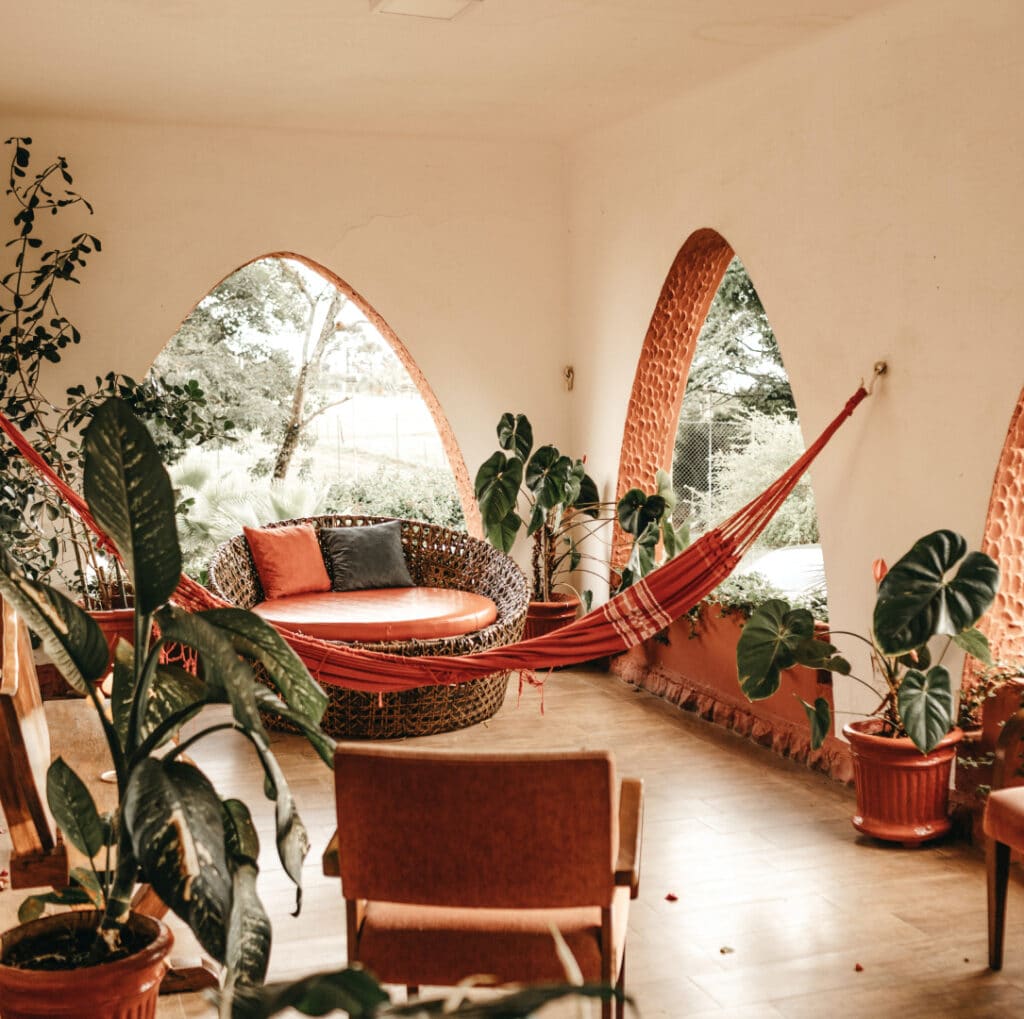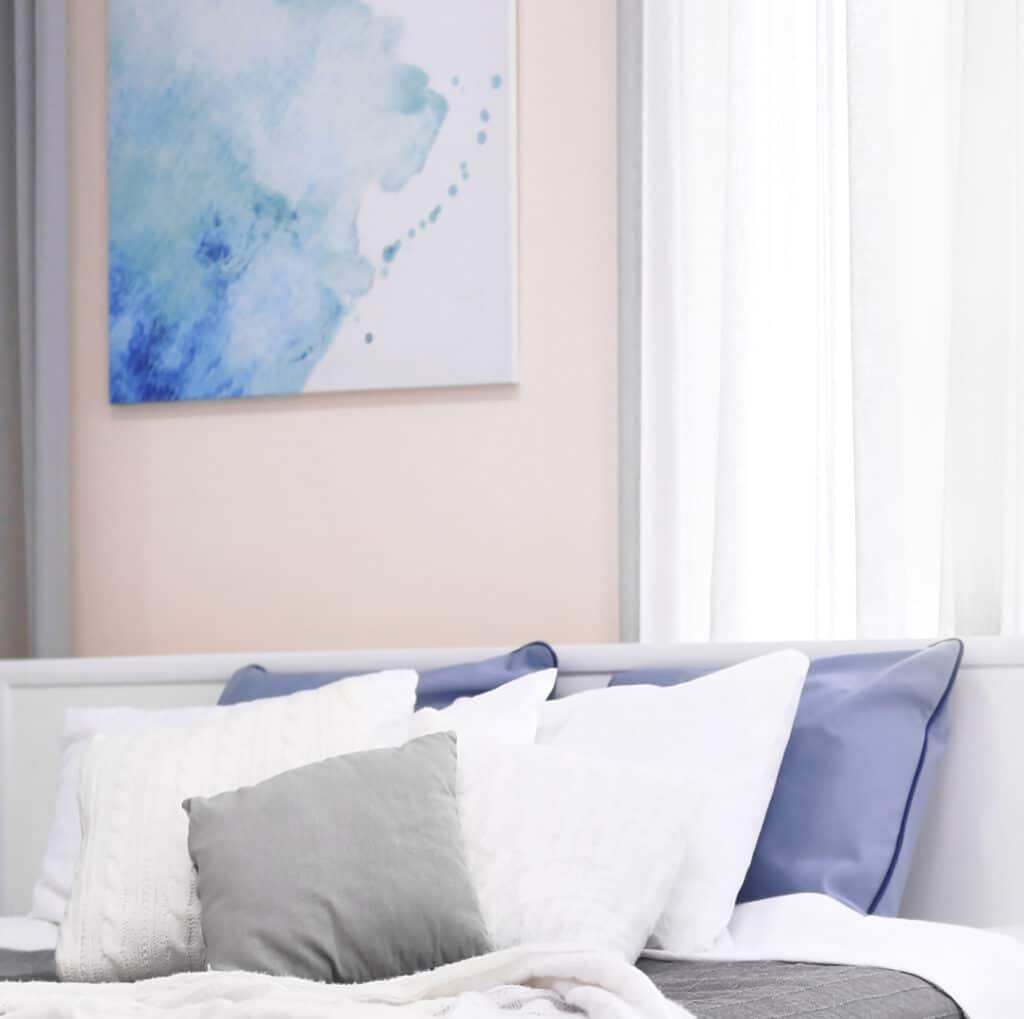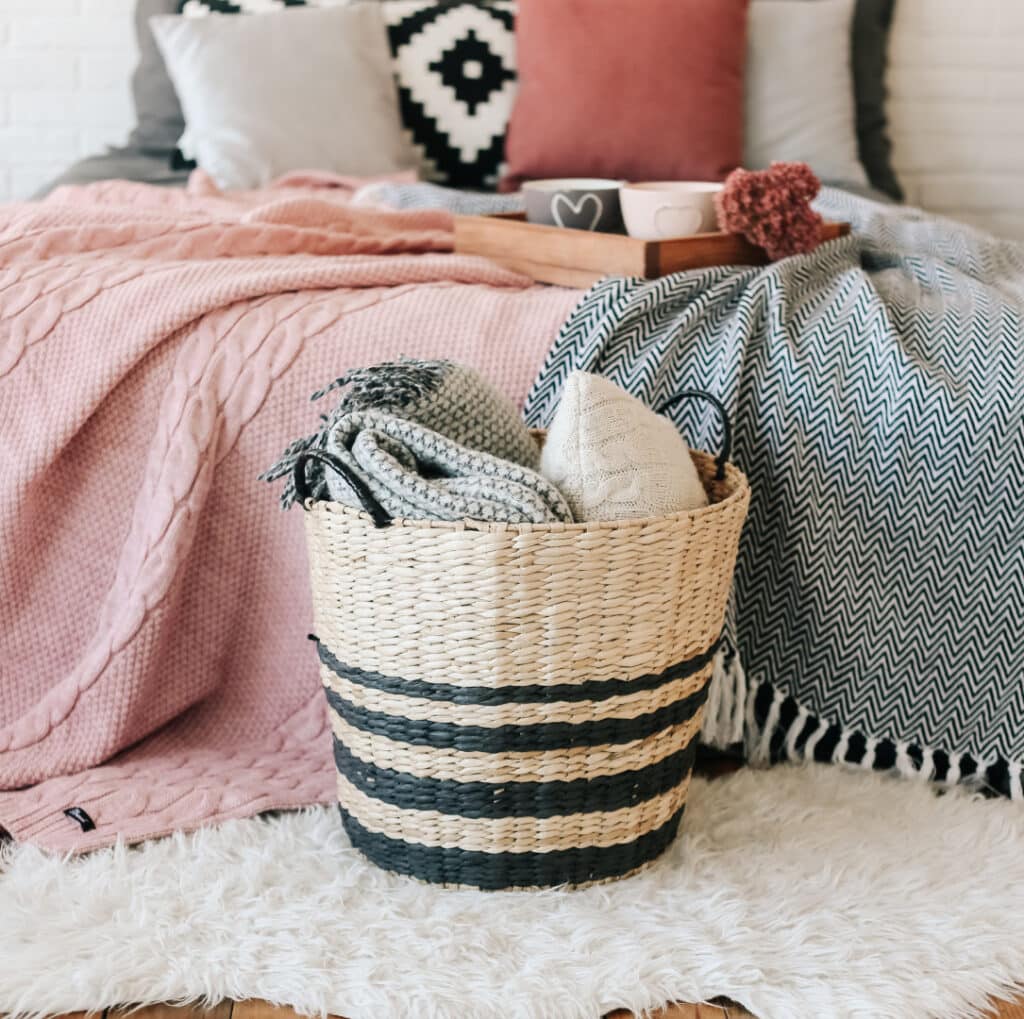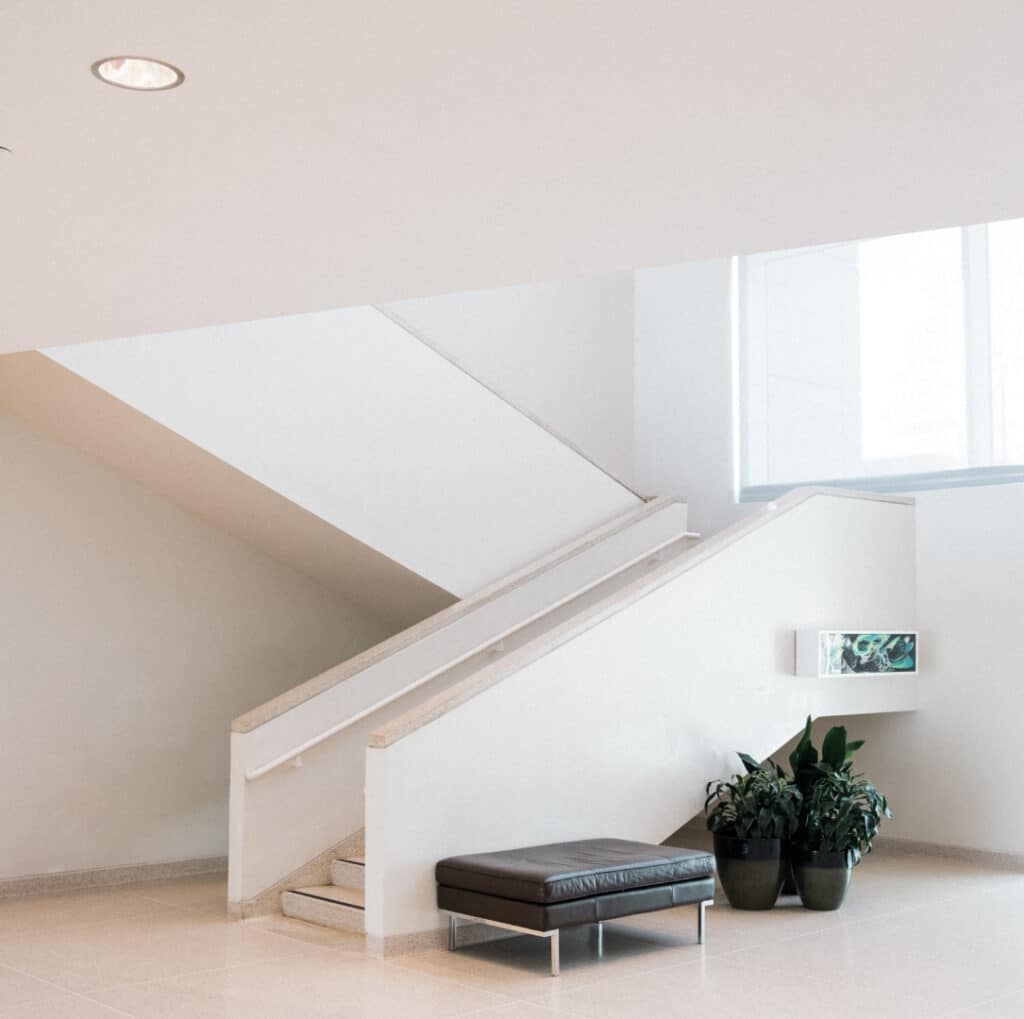Anti-anxiety interior design is a holistic approach to designing spaces that prioritise the well-being and mental health of individuals. It involves the intentional use of specific design principles to create calming, stress-reducing environments. Anti-anxiety design also takes into consideration the impact of surroundings on emotional states, aiming to minimise anxiety triggers.
The Emergence of Anti-Anxiety Design
As interior designers, we are well-versed in ensuring commercial and domestic spaces are accessible to individuals who have physical disabilities, but are we doing enough to be inclusive in designing spaces that are conducive to mental health? Thankfully, every day we’re seeing a societal shift towards design that centres around improving the way we feel. But what interior design principles do we consider if we want to reduce anxiety in particular?
Individually, we experience feelings of anxiety or stress differently, so regrettably, there is no one-size-fits-all design principle to help alleviate feelings of anxiety for everyone. Nonetheless, there are a few common principles that have been proven to reduce feelings of anxiety or stress. Let’s delve into them together.
Biophilic Design

Biophilic design principles offer some of the most promising approaches to reducing anxiety in our man-made environments. By integrating elements of nature into architectural and interior design, such as natural light, plant life, and organic materials, we can create spaces that resonate with our innate connection to the natural world. This connection has been shown to have psychological benefits, including lowered stress levels and reduced anxiety. If you want a simple way to incorporate some biophilic elements into your interior schemes, start by adding some plant life. Not only will they improve the air quality, but it has been shown that nurturing plants can help improve mood regulation.
✨ Tips
- Incorporate plant life
- Harness natural light
- Use organic materials
Calming Colours

When it comes to choosing interior paint colours to improve anxiety, there are some key dos and don’ts to keep in mind. Opt for soothing and calming shades like soft blues, muted greens, and warm neutrals. These colours can create a serene atmosphere and promote a sense of relaxation, and they have even been proven to lower blood pressure.
Avoid selecting overly bold or vibrant colours like bright reds or neon yellows, as they can be too stimulating and may increase feelings of restlessness or tension. We suggest considering muted and pastel versions of your favourite colours, as they can provide a sense of familiarity. Additionally, consider using a neutral colour palette consisting of whites, greys, or beiges, as these colours establish a calming atmosphere, especially in areas where individuals seek solace or relaxation.
✨ Tips
- Avoid neon colours
- Select pastel versions of your favourite colour
- Use natural hues
Mindful Material & Texture Selection

Materials and textures also play a role in providing familiarity, which can alleviate feelings of anxiety. Mindfully considering and selecting materials that evoke positive memories or associations has been demonstrated to assist with managing anxiety or stress. Additionally, opting for materials in their natural state, such as concrete or wood, not only brings a sense of ease and familiarity but also reduces visual clutter, contributing positively to anxiety reduction. Soft tactile textures are also an excellent material choice to quickly introduce calming, comforting sensations into any room.
✨ Tips
- Materials with positive associations
- Natural state materials
- Soft tactile textures
Open, Uncluttered Spaces

An open space with clear circulation and ease of movement can evoke a sense of emotional safety. Arranging rooms with a clear sense of order means we can create spaces that feel more intentional, as being organised and minimising clutter has been proven to promote improved mood regulation. It’s been shown that a cluttered environment can have the ability to drain energy, which would negatively impact anxiety levels.
✨ Tips
- Open spaces
- Intentional order
- Minimalising clutter
Incorporating all or some of these anti-anxiety interior design principles can be a transformative step towards creating spaces that not only look beautiful but also nurture our mental well-being. By adopting biophilic design, opting for tranquil colour palettes, and upholding orderly, clutter-free spaces, you can take significant strides toward creating environments that aid in alleviating anxiety.

